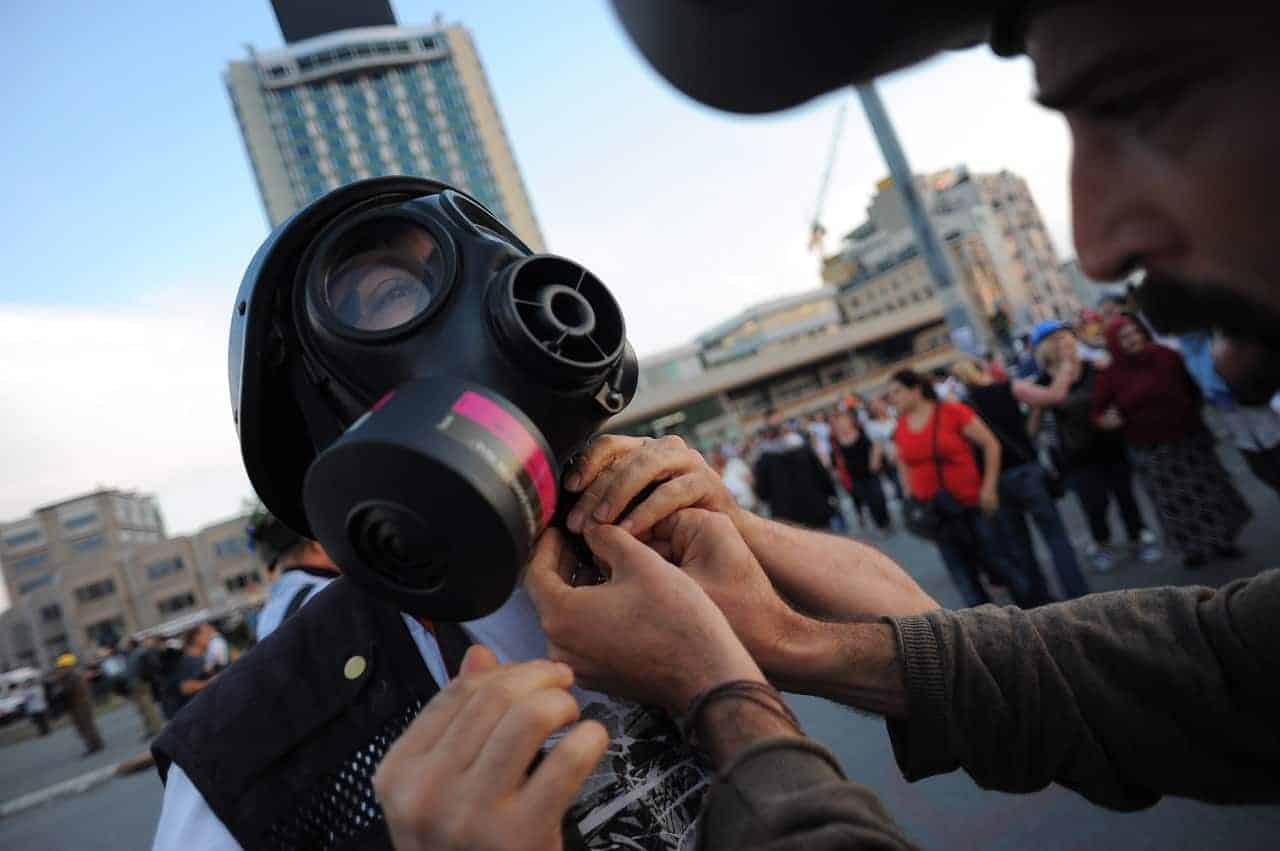
"What are the materials in tear gas?"
The May 22 action which had been marred by riots forced police officers to fire tear gas at the crowd. Masses that breathe tear gas will feel sore eyes and excessive tears. So, what exactly is tear gas? What are the materials in them and how to handle it? Reporting from ThoughtCo, this is the review.
Tear gas or lachrymatory agent is chemical compounds that cause watery and painful eyes. Even if it is severe, tear gas can cause temporary blindness. Tear gas can be used for self defense. However, nowadays it is more often used to controlling the masses during riots and used as a chemical weapon.
Tear gas irritates the mucous membranes of the eyes, nose, mouth, and lungs. Irritations can be caused by chemical reactions with the sulfhydryl enzyme group, although other mechanisms also occur. What happens to the inhaler of tear gas is usually coughing, sneezing, and watery eyes.
Tear gas is not deadly, but there are some toxic components. Because actually, tear gas is not merely gas. Most of the compounds used to make tear gas is solid compounds. Tear gas is held in solvent and sprayed as an aerosol or grenade.
There are various type of compounds to make tear gas, but generally have a structural element Z = C-C-X, where Z indicates as carbon or oxygen and X is bromide or chloride.
- CS (chlorobenzylidenemalononitrile)
- CR
- CN (chloroacetophenone) which can be sold as a mace
- Bromoaseton
- Phenasil bromide
- Xylyl bromide
- Pepper spray
People who breathe tear gas will usually experience:
- A feeling of stinging and burning in the eyes, nose, mouth and skin
- Excessive tears come out
- Blurred vision
- Runny nose
- Exposed system can cause chemical rashes and burns
- Coughing and difficulty breathing, including feeling choked
- Disorientation and confusion, which can cause panic
- A strong sense of anger
Tear gas is released in a grenade, which is installed at the tip of the gas gun and fired with an empty rifle bullet. Because of this, people might like hearing gunshots when tear gas is released. The best defense against tear gas is a gas mask. But if you don't have a tear gas mask, there are still other ways to minimize the negative effects of tear gas. If you exposed to tear gas, breathe using cloth or a towel soaked in lemon juice or cider vinegar.
Glasses can also help, especially tight swimming goggles, or chemical safety goggles. Avoid using contact lenses wherever you might be in the tear gas zone. For clothes which were exposed to tear gas, you can still wear it after washing separately from other clothes.
First aid when breathing tear gas is washing the eyes with water or saline solvent until the reaction begins to subside. Exposed skin must be washed with soap and water. Breathing difficulties can be treated with oxygen and in some cases you can use certain medicines used to treat asthma. If there are burns, you can use a medication bandage.














